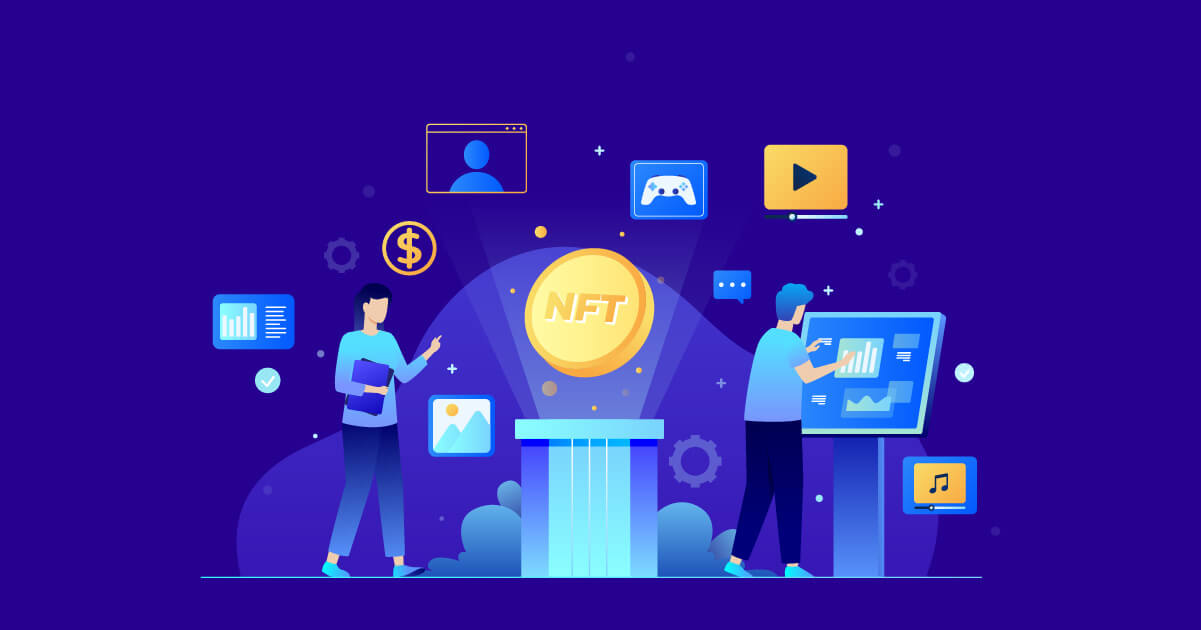
What’s So Nifty About NFTs?
The topic du jour in the media and entertainment industry is NFTs, and for good reason. In the midst of a global pandemic, NFT trading volume exploded in 2020 with $250 million in sales, and in Q1 of this year sales erupted at more than $2 billion.
What are NFTs?
Pronounced “nifty,” NFT stands for non-fungible token. “Non-fungible” means it’s unique and irreplaceable. An NFT is a digital receipt of authenticity that is recorded, validated and stored on a blockchain network like Ethereum.
NFTs are bought and sold on several marketplaces that have formed to keep pace with the NFT boom. One of the largest NFT marketplaces, OpenSea—the self-proclaimed “Amazon of NFTs”—features a skyrocketing inventory of NFTs that grows by the second.
Anything digital—drawings, animation, poems, essays, videos, music, photos, even a digital ticket for a seat at a sporting event or an electronic deed to property—can be sold as an NFT. Jack Dorsey, the founder of Twitter, sold his first tweet for just under $3 million.
Who owns what?
The owner of an NFT doesn’t own the copyright or intellectual property rights to the asset used in the NFT, they simply own a blockchain receipt, proving payment for an original digital file. The creator of the asset retains intellectual and creative rights unless they transfer ownership to someone else.
Many NFTs are configured through “smart contracts” that pay out royalties to the creator of the digital artwork with every sale of the NFT. Creators can package those royalty rights for sale to other investors.
As a unique, emerging digital asset class, NFTs represent a new way to leverage IP while enhancing connections with audiences and fans around the world.
The new digital superpower
The growth potential for NFTs in the media and entertainment industries is greater than the number of superheroes and supervillains in the Marvel Universe. Generating value from current and newly developed digital assets while creating innovative opportunities to further engage with audiences and fans is giving birth to new revenue streams, channel platforms and markets.
Studios can benefit from the increased marketability of NFTs, which could include fan favorite segments, iconic scenes from a movie and even entire TV episodes.
The supply and demand challenges in the film industry today undoubtedly make it harder for filmmakers to capitalize on their films. NFTs might be a worthwhile solution. Everything from movie posters, stills and photos of world premieres, to exclusive footage, memorabilia and director’s cuts could become NFTs.
Streaming services are looking into enhancing user experiences by rewarding loyal subscribers with limited-edition collectible NFTs which could then appreciate over time.
Technology and ingenuity have shaped and changed the media and entertainment industry for decades. The rise of NFTs could play a big role in propelling the industry to unimaginable heights moving forward. As with any technological innovation, it’s sure to come with an array of complex copyright, IP, legal, regulatory, security and tax considerations as well.
It’s a “NFT” time to be alive!

